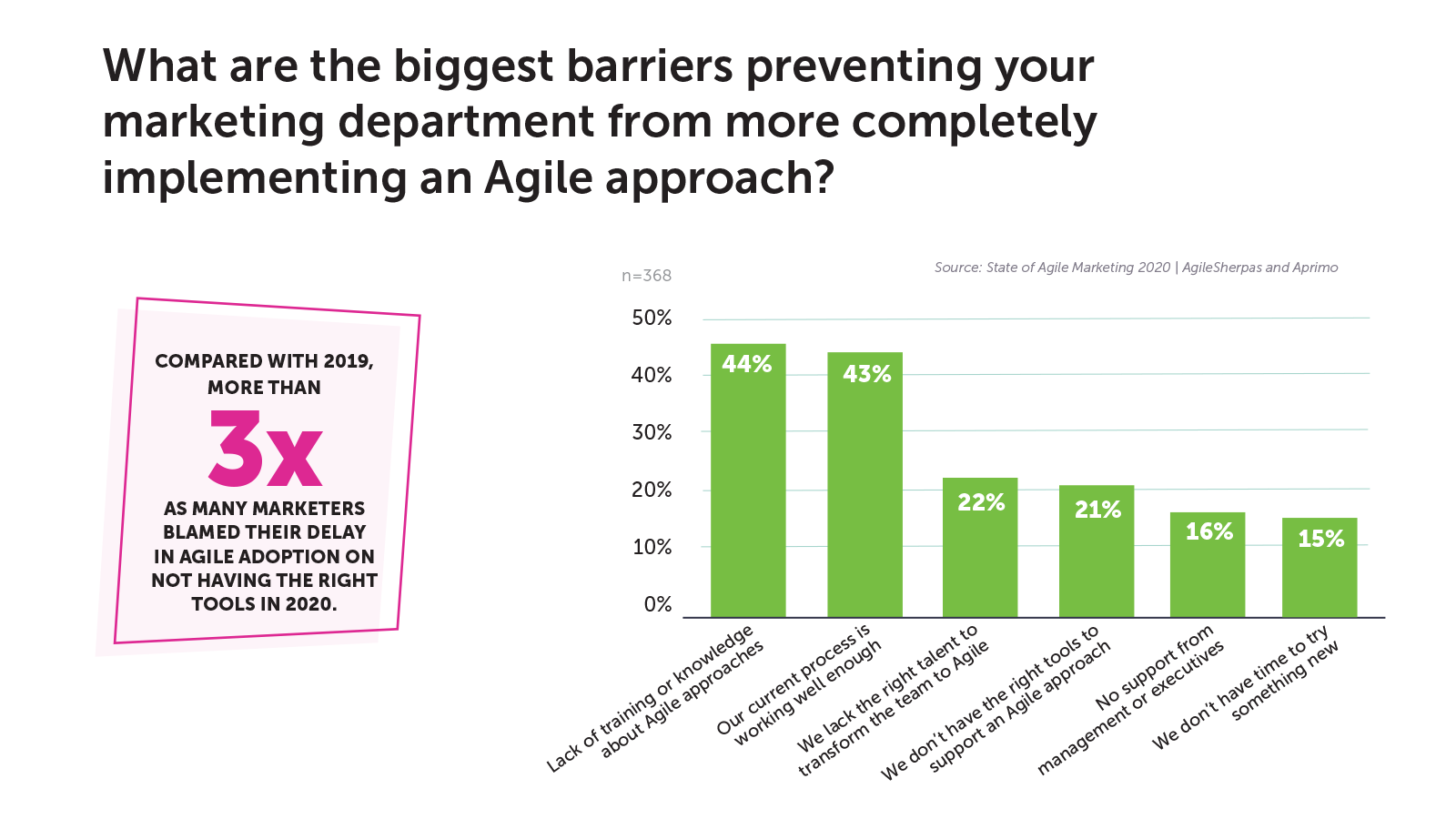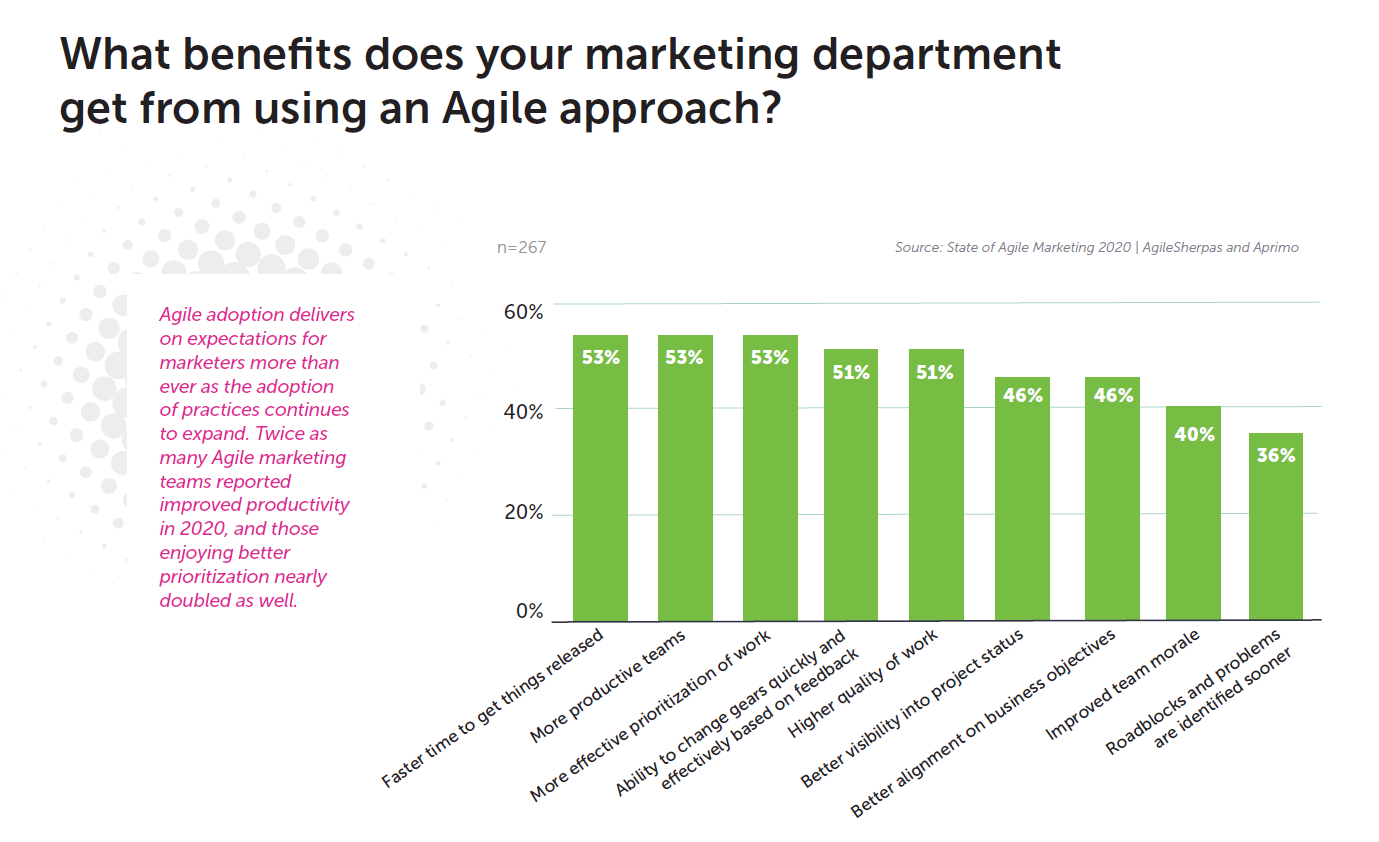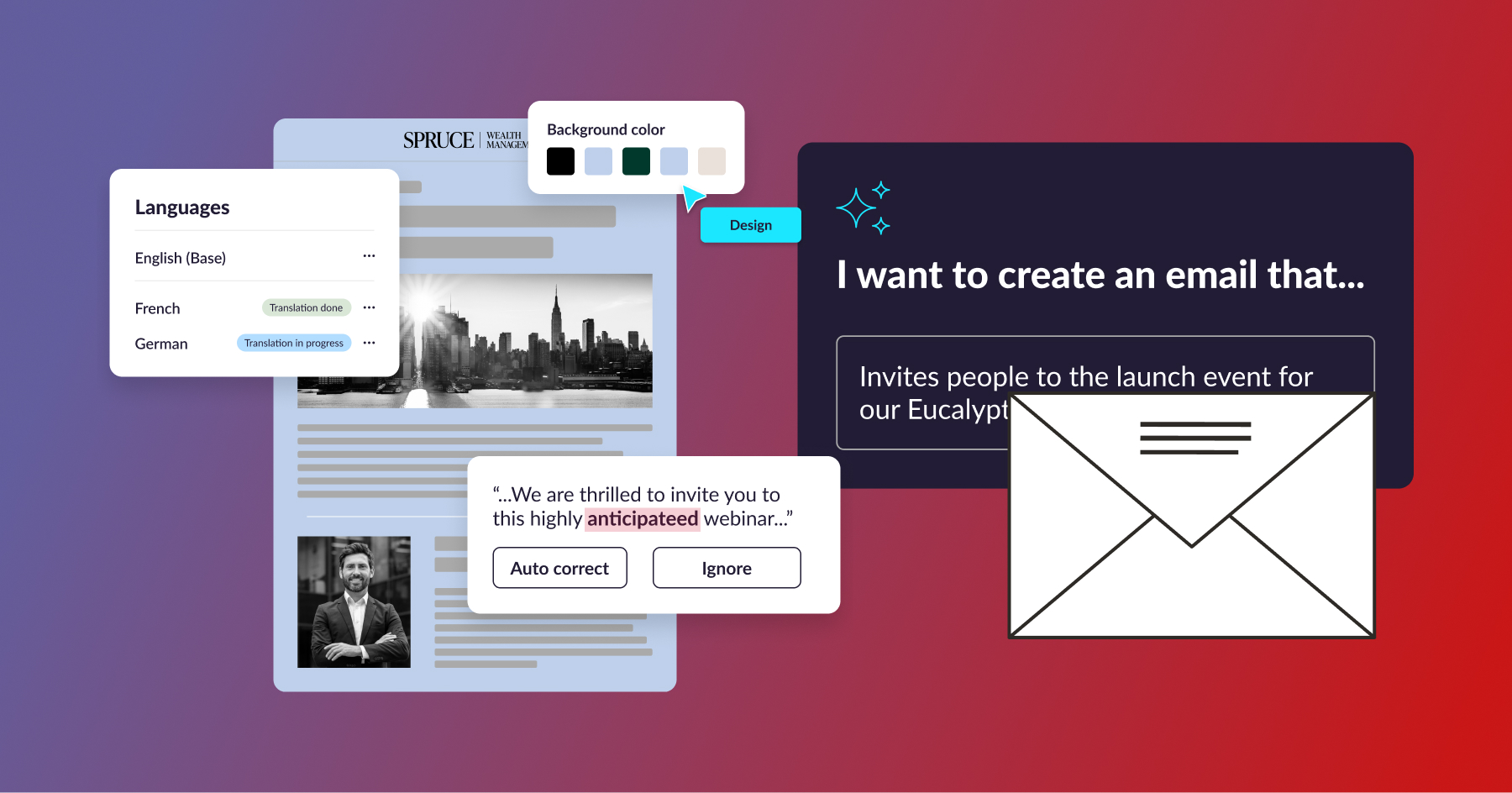The number of marketing organizations looking to adopt agile approaches has grown exponentially this year. As an agile email creation platform, we know firsthand the boost agility can bring to any marketing function, but we wanted to find out more about the reasons marketers are adopting agile approaches, the barriers they’re facing when doing so, and how agile practices are impacting their results — so we turned to one of the foremost agile marketing experts.
Andrea Fryrear is the co-founder of AgileSherpas, an agile marketing training and consultancy firm. She said her team has trained three-times as many groups during October than it did during the same time period last year.
“That’s representative of most months since April,” said Fryrear, “Covid made marketers realize that their annual plans and pre-allocated budgets weren’t cut out to handle the unforeseen volatility of 2020, and that they needed to deliberately build rigorous agile systems that are built to deal with this kind of rapid change.”
Before the pandemic sent U.S. businesses into a tailspin earlier this year, Fryrear’s team conducted their third annual State of Agile report — partnering with Mantis Research to survey more than 600 marketers between December of 2019 through February, 2020. At the time, 41% of the respondents reported using an agile approach and 42% said they planned to implement agile methods within the next year.
Among the marketers who were currently implementing agile approaches, 66% had been doing so for three years or more.
Agile marketers are happy marketers
“The marketers I talk to who are working in an agile team don’t ever want to go back to non-agile ways of working. They feel more connected to the work they do, more valued as an employee, and more committed to their organization,” said Fryrear.
In fact, according to AgileSherpas’ survey results, 75% of agile marketers are more likely than other groups to be satisfied with their work and the results they achieved.
Fryrear says agile teams are more productive and fast, but much of that is a lagging indicator of team cohesion.
“If we want our customers to be excited about the marketing collateral we produce, we should focus on building engaged, satisfied teams of agile marketers. Those are the folks who come up with innovative, customer-centric campaigns. It’s really a win-win-win for marketers themselves, their customers, and the brands they work for.”
When asked what the most important reason was for adopting agile practices, 58% of the agile marketers surveyed said they wanted to improve productivity and 54% said to enhance the ability to manage changing priorities. Others reasons included: Increase innovation, accelerate delivery of campaigns and improve project visibility.
The biggest barriers to adopting an agile approach
While the most common barrier to adopting an agile approach is lack of training or knowledge about agility, according to the survey findings, more than 20% of marketers reported they didn’t have the right tools to support agile practices. In fact, compared to last year’s report, more than three-times as many marketers blamed their delay in agile adoption on not having the right tools in 2020.

“There’s a lovely old agile value of ‘individuals and interaction over processes and tools’ which I think remains totally valid. But within those statements we understand that the second item doesn’t go away or lose value entirely,” said Fryrear, “Having the right digital tools can either make agile run more smoothly or become a major impediment.”
According to Fryrear, if marketing organizations also consider the lean value of reducing waste in a system, tools become super important for getting that right.
“If we have to manually create and recreate email flows, or struggle to accurately segment a database and lose time checking lists, we aren’t using that time to deliver value to customers. That’s waste in our agile system. So while tools are never going to be a magic bullet that makes agility happen overnight, they are crucial elements in a high performing agile system.”
When it comes to an agile, there is always room to improve
While agile approaches continue to deliver, over half of the agile marketers surveyed said they have room to improve, with very few reporting a “high level” of competency when it comes to agile maturity levels. Still, according to AgileSherpas’ report, more than 80% of the agile marketers surveyed reported their team could handle fast-paced work, was aligned with the organization’s vision and could take advantage of emerging opportunities.
The top benefits marketers gained after adopting agile? More than 50% reported faster time to get things released, more productive teams, more effective prioritization of work and the ability to change gears quickly and effectively based on feedback — all tactics that have become a priority this year.

“The pandemic has accelerated agile adoption enormously,” said Fryrear, “A few studies from groups like Gartner have already pointed toward the trend this year and we’re going to be asking about it specifically in the 2021 State of Agile Marketing report which is due out in March 2021.”
How to increase agile maturity levels
For the teams looking to improve their agility, it may be worth taking a look at the biggest barriers identified by AgileSherpas’ report. For example, the most common barrier — lack of training and knowledge — can be resolved with the right resources and agile coaches.
For the teams that lack the right tools, doing due diligence to find platforms that enable agile practices can drastically impact your team’s overall productivity, efficiency and quality of work.
We’ve seen it happen: stensul’s clients have cut email creation times by as much as 90% because our platform was developed to deliver an agile environment for email creation. Enterprise marketing organizations have been able to increase the number of emails they send without adding more staff or resources.
If you’d like to determine your agile maturity level when it comes to email marketing, be sure to check out stensul’s Email Maturity Model white paper — a comprehensive guide to assess your email programs and agility levels.
You can find AgileSherpas’ full report here: 3rd Annual State of Agile Marketing Report.

